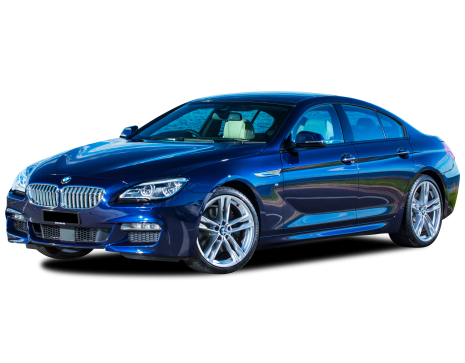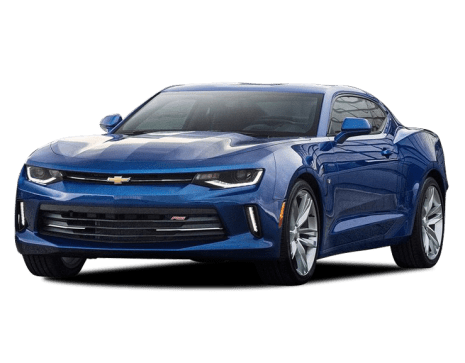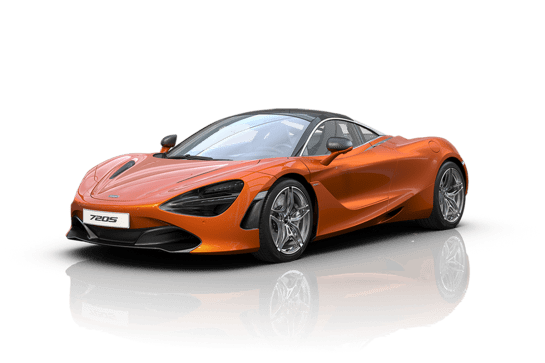
Lamborghini Aventador VS Aston Martin DBS
Lamborghini Aventador
Likes
- Styling, so much styling
- That V12 engine, the pure speed rush of it
- The noise, absolutely bonkers
Dislikes
- Not being able to see anything behind you or beside you
- The price. You could have five great cars for this much
- The sheer mass, width and weight of it
Aston Martin DBS
Likes
- Immense performance
- Design and engineering
- Dynamics
Dislikes
- No Android Auto or Apple CarPlay
- Rear seats barely viable
- No AEB
Summary
Lamborghini Aventador
Too fast, too loud, too crazy, too dangerous, too big. All of these are phrases a supercar lover would never think to utter when considering the sanity-defying existence of the new Lamborghini Aventador S, and yet exactly the kind of things any reasonable person might say after driving one, or even witnessing it in motion.
Too much, clearly, is never enough in La La Lambo world, and it's certainly true that if you desire a car that will puncture your eardrums while rupturing your spleen and bruising your heart, this is the perfect vehicle for you.
Five years after its launch, the Aventador has been updated and upgraded - with new rear-wheel steering, an allegedly improved gearbox, tweaked styling and a button that says EGO - and uprated, with even more power that it clearly wasn't crying out for.
We went to Phillip Island to drive it around a high-speed track covered in rain, mist and suicidal geese.
| Safety rating | — |
|---|---|
| Engine Type | 6.5L |
| Fuel Type | Premium Unleaded Petrol |
| Fuel Efficiency | 16.91L/100km |
| Seating | 2 seats |
Aston Martin DBS
In mid-2018, to coincide with its global launch, CarsGuide was invited to a hush-hush, behind-closed-doors preview of the Aston Martin DBS Superleggera.
Hidden within a maze of black velvet drapes at a low-key, inner-city Sydney location sat the famous British brand’s new flagship, a stunning 2+2 GT with the performance, dynamics and luxurious quality to match its exotic looks and $500K+ price tag.
On that day, for whatever reason, I never thought the opportunity to steer it would come my way. But two years later, almost to the day, the key to this ‘Sabiro Blue’ beauty was mine.
The DBS Superleggera sits at the top performance coupe table, mixing it with Bentley, Ferrari, and Porsche’s finest. But maybe you already have one (or more) of those. Which begs the question, does this imposing V12 machine do enough to qualify for an extra space in your garage?
| Safety rating | |
|---|---|
| Engine Type | 5.2L turbo |
| Fuel Type | Premium Unleaded Petrol |
| Fuel Efficiency | 12.4L/100km |
| Seating | 4 seats |
Verdict
Lamborghini Aventador6/10
The Lamborghini Aventador S is a hugely unnecessary car that probably wouldn't exist at all in any sane universe. Fortunately it's from Italy instead.
While it definitely has its flaws - it's simply too big, and too fast, to drive on public roads, and it's too heavy, and mental, to be a purist's track car - there is still something strangely charming about it.
It's the ridiculous design, those super-cool doors, the outrageous and deafening noises it makes, and what it does to your internal organs when you accelerate in it.
There are better, sharper and more affordable supercars than the Aventador S, but there are none that are anything like it.
Is the Aventador S your dream supercar, or would you prefer an F12 Berlinetta? Tell us what you think in the comments below.
Aston Martin DBS8.1/10
The Aston Martin DBS Superleggera is an instant classic, likely heading over a high-end auction block in years to come with a final price far higher than the 2020 ask. But don’t buy it as a collector's item, although it is a beautiful object. Buy it to enjoy. Stunningly fast, thoroughly engineered, and beautifully made, it’s a phenomenal car.
Design
Lamborghini Aventador9/10
The lovely and loquacious Italians from Lamborghini showed us a revealing little sketch at the car's launch, which looked a little bit like a bad tattoo but said a lot about their design ethos. It featured mean-looking sharks and menacing cobras morphing with an outline of the Aventador, and was meant to represent the approach to further man-ing up the looks of this S version.
The shark fins are clearly evident in the new and even bigger front splitter, the cobra must be hiding under the engine cover somewhere, while the new rear exhaust shape is apparently modelled on the Space Shuttle.
There are a few touches of the classic Countach, apparently, and plenty of "aerospace" design, which means they've tried to make it look like a fighter jet.
The overall effect is about as over the top as Lady Gaga marrying Ivanka Trump, and yet because its a Lamborghini, you find yourself loving it anyway. Absurdity is their reality. And how could you not fall for any car with those doors?
The interior is not as classy feeling as a Ferrari, but it has a certain brash, flash-cash opulence to it that makes you smile as well.
Aston Martin DBS9/10
The term Superleggera (Italian for Superlight) is normally associated with Italian automotive coachbuilder Carrozzeria Touring, which has historically applied its fine eye and hand-crafted aluminium body technique to a host of local brands, including Alfa Romeo, Ferrari, Lamborghini, Lancia, and Maserati.
As well as some American, German, and British liaisons, the latter covering classic Aston Martin and Lagonda models through the 1950s and ‘60s (your Silver Birch DB5 is ready for you 007).
But rather than hand-beaten aluminium, here the body panel material is carbon-fibre, and the look and feel of this DBS is the product of Aston Martin’s head of design, Marek Reichman (his name might sound German, but he’s a Brit through-and-through), and his team at the brand’s Gaydon HQ.
Based on the DB11 platform the DBS is a fraction over 4.7m long, just under 2.0m wide, and less than 1.3m tall. But it’s only when you’re close to the Superleggera that its intimidating muscularity comes into focus.
A giant, black honeycomb grille defines the car’s face, and the single-piece forward-hinging ‘clamshell’ bonnet includes a raised central section defined by longitudinal strakes either side, with deep vents above the front axle line to aid the exhaust of hot air from the engine bay below.
Broad ‘shoulders’ around the front wheel arches are balanced by powerful rear haunches to give the car a beautifully proportioned and imposing stance. But there’s scientific function behind this purposeful form, too.
The Aston vehicle dynamics team went all out with wind tunnel testing, Computational Fluid Dynamics (CFD) modelling, aerothermal and performance simulations, as well as real-world track testing to refine this car’s aero efficiency.
The DBS Superleggera’s overall drag coefficient (Cd) is 0.38, which is commendably slippery for a brawny 2+2 GT. But it’s the fact that in parallel with that number it’s able to generate a humongous 180kg of downforce (at 340km/h VMax) that’s remarkable.
The aero trickery includes a front splitter and airdam working in unison to accelerate airflow under the front of the car, delivering downforce and cooling air to the front brakes.
From there the ‘open stirrup and curlicue’ device at the top of the front wheel wells vents air to reduce lift, and create vortices which reattach the aero wake from the front wheels to the side of the car.
The ‘C-Duct’ starts with an aperture behind the rear side glass funneling air through the underside of bootlid to a subtle ‘Aeroblade II’ spoiler at the rear of the car. A close to flat underside also feeds air to an F1-inspired double diffuser under the rear end.
No gaudy wings or giant spoilers, just a subtly effective and thoroughly engineered aero profile.
Slim but distinctively Aston Martin LED tail-lights combine with a series of horizontal character lines across the rear to enhance the car’s visual width, and giant 21-inch dark rims fit the car’s proportions perfectly.
Slipping behind the wheel is the full hand-in-leather glove experience. The broad dashtop is split by a vaguely teardrop shaped centre stack with the classic ‘PRND’ transmission buttons and an illuminated push-button starter in the centre.
The compact instrument binnacle, housing a configurable digital display, imparts a quiet sense of purpose, and the Mercedes-AMG sourced media system, complete with rotary control dial, feels familiar. Overall, simple, subtle, yet hugely impressive.
Practicality
Lamborghini Aventador2/10
Yes, the Aventador S is a car, and it will take you from Point A to Point B, although you might leave some of your life expectancy behind on every trip, but other than that, practicality is not a selling point.
It is 4.8m long, just over 2m wide and a mere 1.14m high, the giant Lambo is as thick across the hips as a Toyota LandCruiser, and as pleasant to climb in and out of as an iron lung.
It also burns slightly more fuel than a Space Shuttle launch and is virtually impossible to see out of, but owners won't care because every other car will be behind them somewhere, and they'll only be looking out for plate-glass windows to admire themselves in anyway.
There are no cupholders (although apparently you can option them) and there's virtually no room to store anything at all. None of this matters, of course, because if the people who buy an Aventador S want practicality they'll simply choose one of the other 20 cars in their personal fleet.
Aston Martin DBS7/10
The notion of practicality doesn’t naturally align with a 2+2 GT, but a wheelbase measuring 2805mm means there’s enough space between the axles to provide generous accommodation for front seat occupants at least.
And the usual compromises presented by long coupe doors are reduced by the DBS’s swinging slightly up as they open, and down as they close. A genuinely useful touch.
The driver and front seat passenger are snug but not cramped, which feels right in this context, and they’re provided with a lidded central box, which doubles as an armrest between the seats.
Flick the switch and its power-operated top slides back in stages to reveal two cupholders and a general storage space with a 12V power outlet, two USB-A ports, and an SD card input at the rear.
There’s a small coin tray in front of the multimedia dial in the centre console and long door pockets, but bottles will be a struggle unless you’re happy to lay them on their side.
The ‘+2’ seats scalloped out of the rear bulkhead, look super cool (especially with our car’s Triaxial quilt trim) but for anyone in the vicinity of average adult height they’ll feel distinctly inadequate.
Legs or a head aren’t viable options so this space is best reserved for the kids. And there are two 12V sockets in the rear to help keep their devices charged, and them calm.
Boot volume is a useful 368 litres, and the aperture curves forward at the top which helps with loading larger cases, but remember the rear seats don’t fold.
There are small lockers hidden in the back wall, one containing a flat tyre repair kit, so don’t bother looking for a spare of any description.
Price and features
Lamborghini Aventador7/10
On the one hand, the $788,914 price for this new S version of the Aventador (the S stands for "Something that is better" according to the Italians) is problematic, and slightly ridiculous, because it seems a lot to pay for a car that would have you shot on sight on suspicion of speeding by the Victorian Police and is about as well suited to Australian conditions as an igloo.
On the other hand, which is covered in thick gold rings with a fat Rolex attached to its wrist, it makes perfect sense, because its vast and silly size perfectly complements the very nature of the car, which is perhaps the biggest 'look at me, I'm rich' statement short of sky writing your bank balance.
The sort of person who buys a car like this, rather than the cheaper, far more sensible and, frankly, enjoyable Lamborghini Huracan, actually wants to pay a lot of money, because it's part of the fun.
Sure, that price only gets you two seats but they're very sexy ones, and truly grippy to sit in, which they need to be in a g-force monster like this.
There's only one spec for an S buyer, and it includes little treats like Apple CarPlay, but if you want the telemetry system, to record your lap times, it's an optional extra, at $3400.
The one feature every owner will want to show off, though - aside from the obvious ones like the scissor doors and 'Bombs-away!' starter - is the EGO button. This is basically a fourth setting to add to the car's existing Strada (Street in Italian), Sport and Corsa (Race) options, but confusingly, because it is entirely personalisable, it actually offers another 24 settings when you press it.
Sure, it's slightly pointless, but at least it's honest, because EGO is what this car is all about.
Each of those settings also changes the Aventador S's lush and wondrous Kombi dash screens (the Lamborghini-styled version of owner Audi's Virtual Cockpit), offering race-car like giant tachometers and even a graphic that shows you which way your wheels are pointing. Not that you'll have time to look at it when exploring your car's 350km/h top speed.
Aston Martin DBS9/10
The DBS Superleggera is like a finely tailored suit. Impressive, but not flashy, while the finish is impeccable, the materials used are top-shelf, and attention to detail is remarkable. And like anything that’s been carefully crafted and largely hand made, the price is substantial.
Before on-road costs like registration, dealer delivery charges, and compulsory insurance, this Aston will set you back $536,900.
The $500K ballpark contains some heavy-hitting competition, the most closely aligned being Bentley’s 6.0-litre W12-engined Continental GT Speed ($452,670), the 6.3-litre V12-powered Ferrari GTC4 Lusso ($578,000), and Porsche’s 3.8-litre twin-turbo flat-six 911 Turbo S ($473,900). All 2+2s, all insanely fast, and bristling with luxury features.
So, aside from the safety and dynamic tech detailed later in this review, what does this special DBS deliver in terms of standard equipment?
First, there’s the Aston Martin, nine-speaker premium audio system (including 400W amp and digital radio, but no Android Auto or Apple CarPlay), a multimedia system managed via an 8.0-inch LCD screen and console touchpad/dial controller system (sourced from Mercedes-AMG), satellite navigation, a Wi-Fi hub, and a 360-degree camera with ‘Parking Distance Display’ and ‘Park Assist.'
Standard upholstery across the seats, dash, and doors is ‘Caithness’ leather (Aston says a dry-drumming process gives it a particularly soft feel) combined with Alcantara (synthetic suede) and ‘Obsidian Black’ leather on the faceted (think square-ish) sports steering wheel, finished off with the DBS logo embroidered into the headrests.
The ‘Sports Plus’ performance seats (with memory) are 10-way electrically-adjustable (including lumbar) and heated, the steering wheel adjusts electrically, ‘interior jewellery’ (trim elements) are ‘Dark Chrome’, and cabin inlays are ‘Piano Black.’
Also included are a configurable digital instrument display, dual-zone climate control, keyless entry and start, rain-sensing wipers, cruise control (not adaptive), auto LED (high and low beam) headlights and DRLs, as well as LED tail-lights and dynamic indicators.
The ‘Exterior Body Pack’ consists of gloss-finish carbon-fibre across the rear bumper, bootlid flap spoiler. rear diffuser, and front splitter, and the standard rims are 21inch forged ‘Y spoke’ alloys, with (big) dark anodised brake calipers behind them.
All up, a subtle and exclusive approach to an equipment package that’s as much about the overall quality of the car’s design, engineering, and execution as it is about individual features.
But on the subject of features, ‘our’ car was kitted out with a series of special options, namely: Bang & Olufsen audio - $15,270, ‘Leather colour option special’ ‘Copper Tan’ (metallic) - $9720, contrast stitching - $4240, vented front seats - $2780, power seat bolsters - $1390, Triaxial quilting - $1390, headrest embroidery (Aston Martin wings) - $830.
That’s $35,620 worth, and there were still other boxes ticked, like a colour keyed steering wheel, smoked rear lamps, plain leather headlining, ‘Shadow Chrome’ rims, even an umbrella in the boot... but you get the idea.
And if you really want to personalise the car, ‘Q by Aston Martin’ offers a collection of “unique enhancements beyond the scope of the core option range.” Then ‘Q Commission’ opens up a bespoke, atelier-style collaboration with the Aston Martin design team. Possibly an entirely custom car, or just machine guns behind the headlights.
Under the bonnet
Lamborghini Aventador7/10
Let's start with the bad news, which is that the all-new seven-speed ISR (Independent Shifting Rods) gearbox that was supposed to fix the old-tech lurchiness of the Aventador's driveline is still so far off the pace of modern, dual-clutch transmissions that it's mildly embarrassing.
Change gear at speed in this vicious V12 and you're in for a kind of stop-motion, Wallace and Gromit experience. There's no doubt you can feel the aggression of the shifts, but they do remind you of a long-past time when upshifts meant a short break between rushes of acceleration, rather than the seamless shove you now get from a Ferrari (or even a Golf GTI).
Your gear changes can be so violent that they knock the breath out of you, but it could be argued that this merely suits the personality of the car, which in turn reflects the absurdity of its manic engine.
Power has, somehow, been raised by 30kW to an astronomical 544kW at a deafening and ballistic 8400rpm. Lamborghini says the new tune gives even more torque at higher revs, but its maximum figure of 690Nm is actually less than Ferrari's V8-powered 488, which has 760Nm.
The difference is turbochargers, of course, a limp-wristed affectation of a technology that Lamborghini still eschews.
They will tell you it's all about the way the car performs and accelerates, and with a 0-100km/h time of 2.9 seconds (not even a whisker faster than the standard Aventador, which shows you how difficult those times are to improve on), a 0-200km/h dash of just 8.8 seconds, and 0-300 in 24.2, it does do these things well.
What it's really about, though, is the operatic purity and visceral violence of the way the engine sounds, and with its all-new muffler and exhaust system, the S really does take big, shouty showiness to new levels.
Indeed, I would venture this is the loudest road car my ears have ever been assaulted by (a Porsche 918 is louder, but it's really a race car with a rego sticker). Under acceleration it is as eyebrow-liltingly loud as the front row of an AC/DC concert back in the 1990s, but it is the series of explosions you get on the overrun when fear pushes your foot off the throttle that are truly astounding. It sounds like someone throwing steel rubbish bins full of grenades into a cement mixer.
Crazy? Yes. Unnecessary? Yes, but it is wonderful.
It's possible that, as some of my colleagues claimed they could notice, the S is more instantly ballistic when you press the accelerator than the normal Aventador, but frankly that's like comparing being shot with different guns. Let's just say it's a hugely violent, chest-beating engine. And I love it.
Aston Martin DBS9/10
The DBS Superleggera is powered by an all-alloy, 5.2-litre twin-turbo V12, featuring dual-variable camshaft timing and direct-injection to produce 533kW (715hp) at 6500rpm and 900Nm from 1800-5000rpm.
In line with the personal nature of this car’s build, a brushed metal plaque sits on top of the engine, proudly stating ‘Hand built in England’, and noting that a final inspection was carried out (in our case) by Alison Beck.
Drive goes to the rear wheels via an alloy torque tube and carbon propshaft to a (ZF-sourced) eight-speed automatic transaxle, incorporating a mechanical limited-slip differential, with manual shifts available via wheel-mounted paddles.
Efficiency
Lamborghini Aventador3/10
Yes, it sure does consume fuel. Quite a lot, with claimed figures of 26.2L/100km on the urban cycle, and a combined urban/highway figure of 16.9L/100km. Frankly, you'd be lucky if you kept it under 30.0L/100km. It's thirsty work to drive.
Aston Martin DBS7/10
Claimed fuel economy for the combined (ADR 81/02 - urban, extra-urban) cycle is 12.3L/100km, the DBS emitting 285g/km of CO2 in the process.
In just under 150km with the car, covering city, suburban and freeway running (as well as a sneaky B-road session) we recorded an average of 17.0L/100km, which is a sizeable number, but kind of expected for a roughly 1.7-tonne, V12-powered meteor on wheels.
Stop-start is standard, minimum fuel requirement is 95 RON premium unleaded, and you’ll need 78 litres of it to fill the tank (which translates to a real world range of approximately 460km).
Driving
Lamborghini Aventador8/10
Piloting an Aventador around city streets is a challenge, partly because it's like trying to hold a four-metre high, 400kg Rottweiler on a leash, but mainly because it's stupidly wide and you can't see anything from the driver's seat.
Lamborghini has tried to improve the experience of driving it at low speeds with a new rear-wheel steering system, that turns the rear wheels in the opposite direction to the fronts at low speeds, effectively shortening the wheelbase and making it almost liveable in car parks, but then turns them in the same direction as the fronts at higher speeds, for better turn-in and handling.
This was the first time I've ever been fortunate, or perhaps mad, enough to drive an Aventador on a race track, and a fast one at that in Phillip Island, which was covered in a fairly typical Arctic storm front, with enough standing water to attract large, suicidal geese to several corner apexes, including the one at the top of the straight, where the big Lambo was hitting 230km/h before we'd even passed the pits (it had dried out a bit, briefly, for that lap).
With open spaces in front of you, this car delivers the kind of acceleration that forces all the air out of your body, or perhaps you just forget to breathe because your brain is too busy freaking out. It's an invigorating sensation, but not without fear, a bit like jumping out of a plane, and equally addictive.
All that rocket thrust really is its party trick, though, because as mentioned the gear shifts are a bit of a shambles, and the sheer size, and 1575kg weight, of the thing makes it feel like a handful around tight corners.
It's very good around a track for what it is, but what it is is too heavy and too big for circuit driving. Again, you'd have to think a Huracan would be more fun, and would scare you less.
But then it did strike me, on my last lap, as I attempted to find some saliva in my dry mouth, that there's something wonderfully old school, and traditionally Lamborghini, about a supercar that genuinely frightens and intimidates you when you try to push it.
I can't imagine buying one myself, but I can imagine why a certain kind of enthusiast would want to.
Aston Martin DBS10/10
Once you dip under three and half seconds for the sprint from 0-100km/h strange things happen to your field of vision. Faced with that kind of acceleration, it instantly narrows, your brain instinctively focusing attention on the road ahead because it senses something borderline unnatural is going on.
Claiming just 3.4sec for the DBS Superleggera to hit triple figures (and 0-160km/h in 6.4sec!) we felt obliged to validate the number, and sure enough peripheral vision blurred into nothingness as this brutal machine delivered its shock and awe performance.
And the aural accompaniment is suitably intense, thanks to the electronically-controlled (stainless steel) exhaust, with active valves and quad tail pipes, orchestrating the brilliantly guttural and raucous ‘sound character.’
Pure pulling power is immense with all 900Nm of maximum torque available from just 1800rpm all the way to 5000rpm. Mid-range urge is prodigious, and Aston claims the DBS Superleggera will blast from 80-160km/h (in fourth gear) in 4.2 seconds. That’s a number I didn’t verify, but I’m not going to doubt it.
It might share essentially the same bonded aluminium chassis, but thanks to its carbon-rich bodywork the DBS Superleggera is 72kg lighter than the DB11, with a ‘dry’ weight (no fluids) of 1693kg. The engine is also set low and far back in the chassis, to the point where it’s actually a front-mid location, delivering a 51/49 front/rear weight distribution.
Suspension is double (forged alloy) wishbone front, multi-link rear, with adaptive damping standard, and there are three set-up stages available via the flick of a switch on the left-hand side of the steering wheel.
On the opposite side of the wheel a similar mode control allows you to cycle through ‘GT’, ‘Sport’, and ‘Sport Plus’ settings, tuning various functions including the throttle map, exhaust valves, steering, traction control, and shift response. Steering is speed-dependent electrically-assisted.
Brakes are professional grade vented carbon ceramics, with thumping 410mm rotors at the front clamped by six-piston calipers, and 360mm discs at the rear sporting four piston calipers.
Managing this car’s phenomenal thrust as it morphs into lateral g-force, is a surprising experience. Of course, it grips like a Trump handshake, with a specific ‘A7’ version of Pirelli’s ultra-high performance P Zero tyre on a 21-inch forged alloy rim at each corner.
The 265/35s at the front are big, and monstrous 305/30s at the rear deliver a strong mechanical connection with the road. But it’s the car’s steering and overall agility that’s unexpected.
It doesn’t feel like a beefy 2+2 GT. And while it’s not in the 911’s league when it comes to response and dynamic feedback, it’s a long way down that road.
I found Sport and the middle suspension setting to be the backroad sweet spot, and with the seven-speed auto in manual mode the lightweight DBS simply lights up.
Shifts on the way up the ratios via proper alloy paddles in manual mode are rapid and precise, and the car remains stable and balanced, yet entertainingly athletic in enthusiastic cornering.
When squeezed hard on initial application carbon ceramic brakes don’t ‘bite’ in the same way steel discs do, but the system’s ability to rapidly wash off speed, while the car remains in a steady state, is exceptional.
At the same time, shifts down through the gears are accompanied by a variety of aggressive pops and bangs (a feature of Sport and Sport Plus modes) and the DBS points accurately yet progressively into a bend.
Road feel is excellent, the sports front seat is grippy and comfortable, and the car’s ‘Dynamic Torque Vectoring’ (via braking) system chips in to ensure understeer is kept in check.
In a more sedate mode, thanks largely to the active dampers, the Superleggera is surprisingly comfortable around town, despite the big rims and low-profile rubber.
Under the heading of ‘random thoughts’, the simple interior layout (including the spot-on digital instrument cluster) is great, the auto stop-start is a little jerky on restart, and including the front air dam, ground clearance under the nose is only 90mm, so be mega-careful in and out of driveways, or prepare yourself for the sound of scraping carbon (happily avoided this time around).
Safety
Lamborghini Aventador7/10
You're not getting AEB in a car like this, as the sensors would ugly up the front of the car, and there's nowhere to fit them. But you do get a 'passive pedestrian protection system', which is nice.
Some markets get a driver's knee airbag, but sadly we don't, so you have to put up with just four airbags in total, and a collapsible steering column.
Aston Martin DBS7/10
The Aston Martin DBS hasn’t been assessed by ANCAP or Euro NCAP, but the ‘expected’ array of active safety tech is in place including ABS, EBD, and BA, as well as traction and stability controls.
There’s also blind spot monitoring, a tyre pressure monitoring system, a 360-degree camera with ‘Parking Distance Display’ and ‘Park Assist.’
But more recent crash-avoidance tech like active cruise control, lane-departure warning, rear cross-traffic alert, and most notably, AEB, are missing in action.
If an impact is unavoidable there are eight airbags to help protect you - dual-stage driver and front passenger, front side (pelvis and thorax), front knee, as well as two-row curtain.
Both rear-seat positions offer top tethers and ISOFIX anchors for secure baby-capsule or child-seat location.
Ownership
Lamborghini Aventador5/10
You can have a five-year warranty with your Italian supercar, but it will cost you $22,200. Or you can have one for four years for $11,600. Both of those seem like a lot of money, but it's the big jump in year five I'd be worried about.
Aston Martin DBS7/10
In Australia, Aston Martin offers a three-year/unlimited km warranty, with 24-hour roadside assistance included for the duration.
Servicing is recommended every 12 months or 16,000km, whichever comes first.
Aston also offers extended service contract options, renewable after 12 months, including features like transfers and accommodation in the event of a breakdown, and coverage while the car is being used at official Aston Martin events.
There’s also a collection and delivery service (or courtesy car) to sweeten the servicing deal.


































